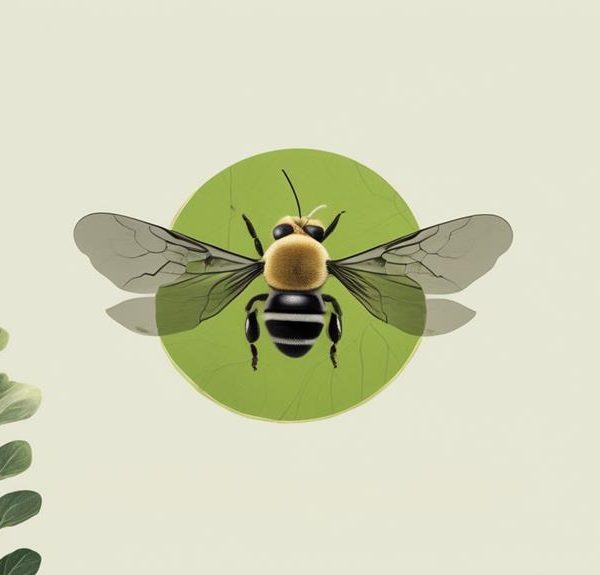Unlock the secret world of leaf cutter bees and their favorite flowers, a knowledge that could transform your garden into a buzzing paradise.
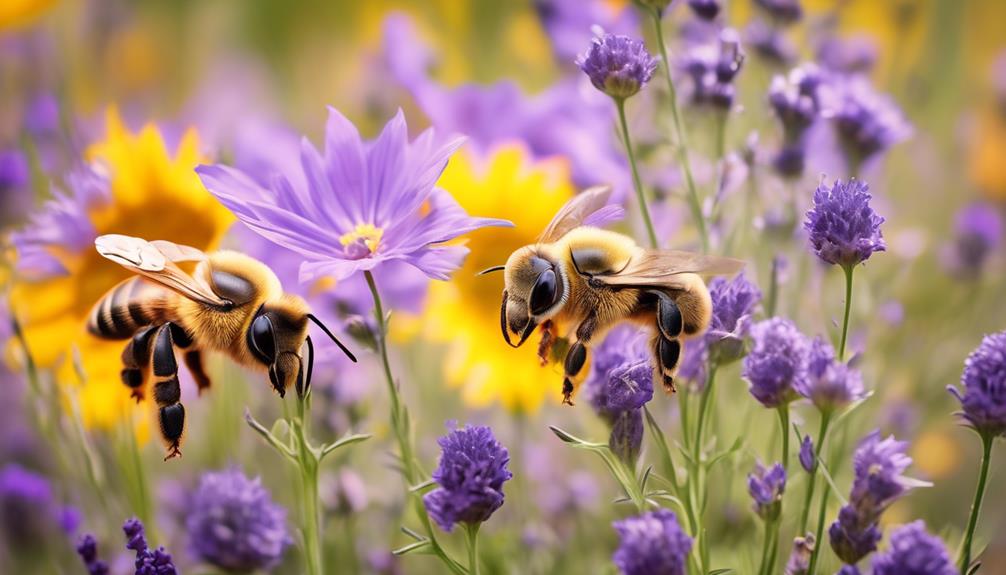
What Flowers Do Leaf Cutter Bees Like?
Whether you're a passionate gardener seeking to attract pollinators or simply a nature enthusiast curious about the behavior of leaf cutter bees, understanding their floral preferences can be both interesting and beneficial.
Leaf cutter bees have an intricate relationship with flowers, but the question begs: what flowers do they specifically like? What attracts them to certain blossoms and not others?
As we pull back the petals of this topic, you'll discover the unique floral allure for these industrious insects and how this knowledge can enhance your own garden or nature observations.
So, let's embark on this journey of exploration, where the answers might just surprise you.
Key Takeaways
- Leaf cutter bees are attracted to flowering plants that produce ample nectar and pollen.
- They prefer flowers with a diameter of around 10mm and that are spaced apart to forage without competition.
- A diverse garden with a variety of flowers will attract a broader range of pollinators, including leaf cutter bees.
- Some top flower choices for leaf cutter bees include asters, coneflowers, goldenrods, sunflowers, roses, and wildflowers.
Understanding Leaf Cutter Bees

Diving into the world of leaf cutter bees, you'll discover that these industrious insects aren't only crucial pollinators, but they also exhibit fascinating behaviors and adaptations.
You'll find that these bees aren't your typical honey bees; they're solitary creatures, each female constructing her own nest. It's her job to gather leaves, creating a cozy cell for her offspring.
Interestingly, leaf cutter bees don't eat these leaves. Instead, they use them in a rather ingenious way. The female bee will cut precise circles out of leaves, often leaving a telltale sign of her visit on foliage. She'll carry these leaf cuttings back to her nest, meticulously layering them to create a protective casing for her eggs.
Within this leafy nursery, the female bee deposits an egg, along with a mixture of nectar and pollen, which serves as food for the larva once it hatches. This process is repeated until her nest is full.
You'll notice that the lifecycle of these bees is a testament to their adaptability and resilience. Understanding these behaviors not only deepens your appreciation for these bees, but it also highlights their significance in the ecosystem.
Attracting Bees With Flowering Plants
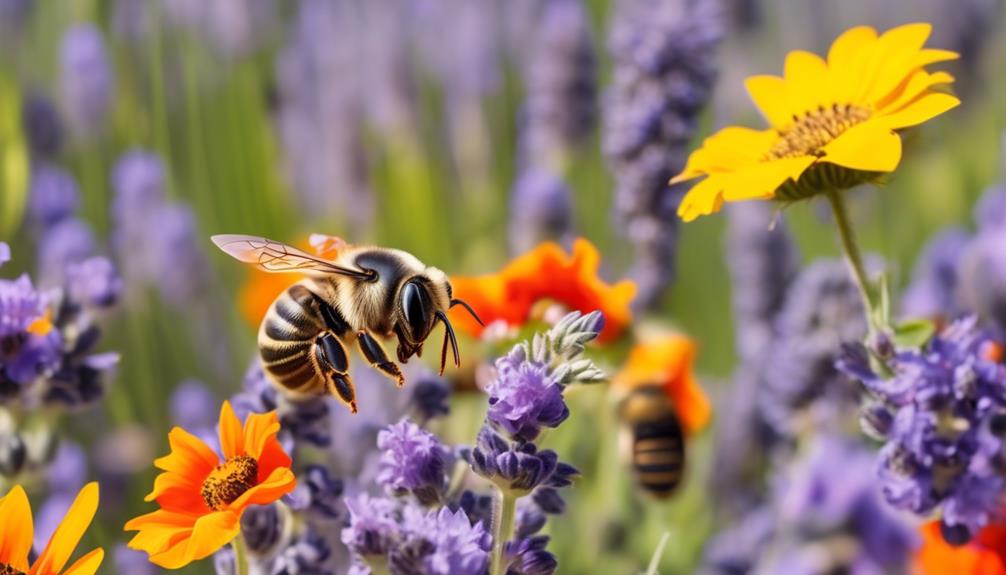
Having observed the intriguing lifecycle of leaf cutter bees, you might now wonder how to attract these crucial pollinators to your garden, and the answer lies in the strategic selection of flowering plants.
Leaf cutter bees are particularly drawn to plants that produce ample nectar and pollen. They're not too picky about the kind of flower, but they do prefer a certain size. They're especially fond of flowers with a diameter of around 10mm. This size allows them to easily access the nectar and pollen while providing a comfortable landing platform.
It's also important to note that leaf cutter bees are solitary creatures. Therefore, they prefer flowers that are spaced apart, so they can forage without competition. Plant your flowers in a sunny, open area and ensure they're not too densely packed.
Plants like lavender, echinacea, and daisies are good choices. They're rich in nectar and pollen and have the ideal flower size. But remember, variety is key. A diverse garden will attract a broader range of pollinators and increase the overall health of your garden's ecosystem. So, mix it up and watch as your garden buzzes with life.
Top Flowers Leaf Cutter Bees Love
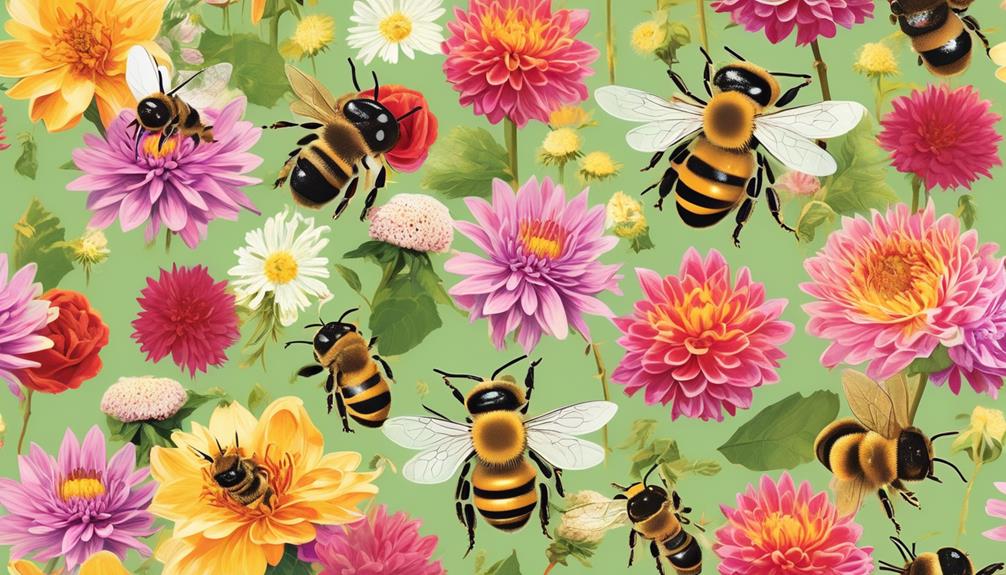
Let's explore the top flowers that leaf cutter bees can't resist, drawing them to your garden with their rich nectar and perfect size.
Firstly, the asters. These perennial plants offer a wide range of colors and sizes, making them a favorite for these bees. The flowers' small size allows the bees to easily access the nectar while collecting pollen.
Secondly, leaf cutter bees find the daisy-like blooms of coneflowers irresistible. Their large, flat petals provide ample room for the bees to land and feed. The bees are particularly attracted to the rich nectar and abundant pollen these flowers produce.
Thirdly, goldenrods, with their bright yellow flowers, are a magnet for leaf cutter bees. They bloom late in the season, providing a valuable food source when other flowers have finished blooming.
Cultivating a Bee-Friendly Garden
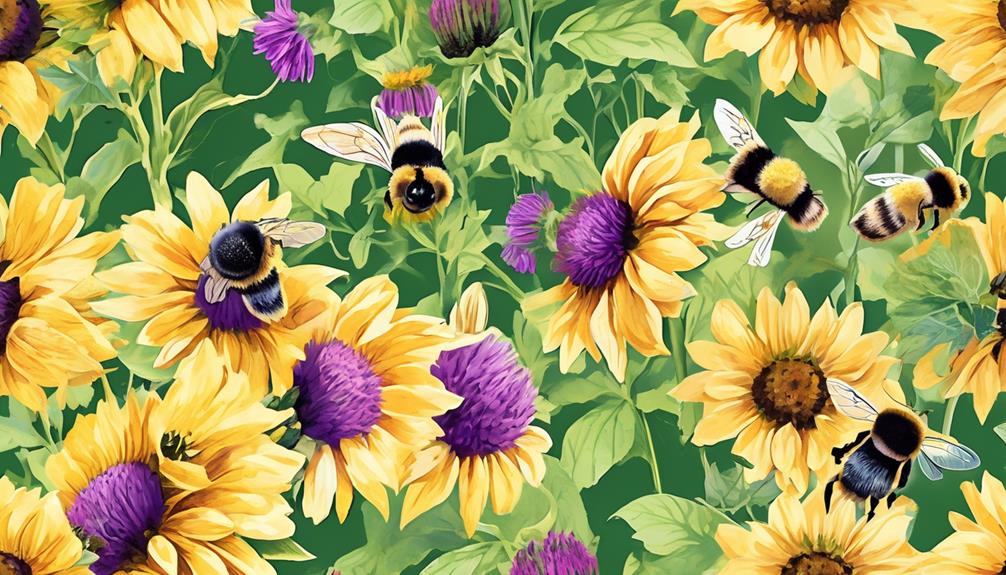
Now that you're familiar with the top flowers that leaf cutter bees prefer, it's crucial to understand how to cultivate these and other plants in a manner that creates a bee-friendly garden.
First off, you'll need to consider the local climate and soil conditions, since these factors significantly affect the growth and blooming patterns of plants.
Incorporate a variety of flower shapes and sizes in your garden to cater to different bee species. Choose flowers that bloom at different times of the year to ensure a consistent food supply for bees. Leaf cutter bees are solitary creatures, so consider leaving some bare, undisturbed soil for their nesting.
Avoid using pesticides, as they're harmful to bees. If you must, use them sparingly and in the evening when bees are less active. Instead, embrace natural pest control methods like introducing beneficial insects or using organic, bee-friendly alternatives.
Lastly, ensure that your garden has a source of fresh, clean water. Bees need water for drinking and cooling their hives. A shallow dish with pebbles or a birdbath can serve this purpose.
With these steps, you're well on your way to creating a thriving, bee-friendly garden.
Impact of Leaf Cutter Bees on Flowers
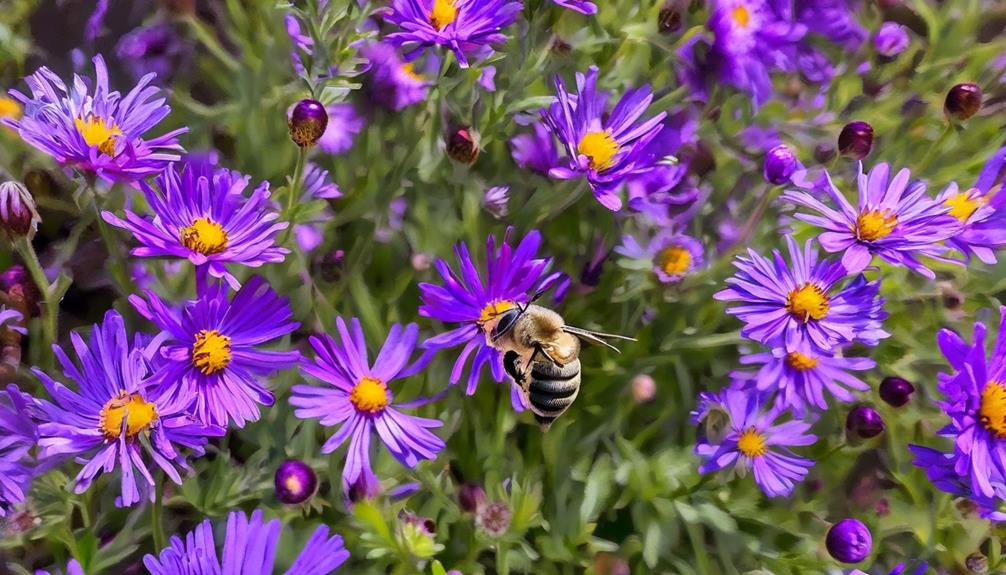
Understanding the impact of leaf cutter bees on flowers is essential as these industrious insects play a crucial role in your garden's ecosystem and overall health. Despite their seemingly destructive behavior of cutting leaves, they're harmless to your plants. Indeed, they contribute significantly to pollination, enhancing your garden's productivity and diversity.
Here's a quick overview of their impact on flowers:
Impact | Example | Explanation |
|---|---|---|
Pollination | Sunflowers | They transfer pollen from male to female flower parts, aiding in fertilization. |
Leaf Cutting | Roses | They cut leaves for nest building, but this doesn't harm the plant's health. |
Seed Production | Wildflowers | Their pollination activity boosts seed production, spreading plant growth. |
Biodiversity | Mixed Flower Garden | Their presence encourages a variety of plant species. |
Ecosystem Balance | Overall Garden | As part of the food chain, they provide food for birds and other insects. |
Conclusion
In conclusion, you've seen how leaf cutter bees favor certain flowers, such as daisies, poppies, and sunflowers.
By cultivating a bee-friendly garden with these plants, you're not only attracting these fascinating creatures but also aiding in pollination.
Though leaf cutter bees may leave distinctive cutouts on your plants, remember, the overall impact on your garden's health and biodiversity is overwhelmingly positive.
Embrace these industrious bees and enjoy the thriving ecosystem they help maintain.

